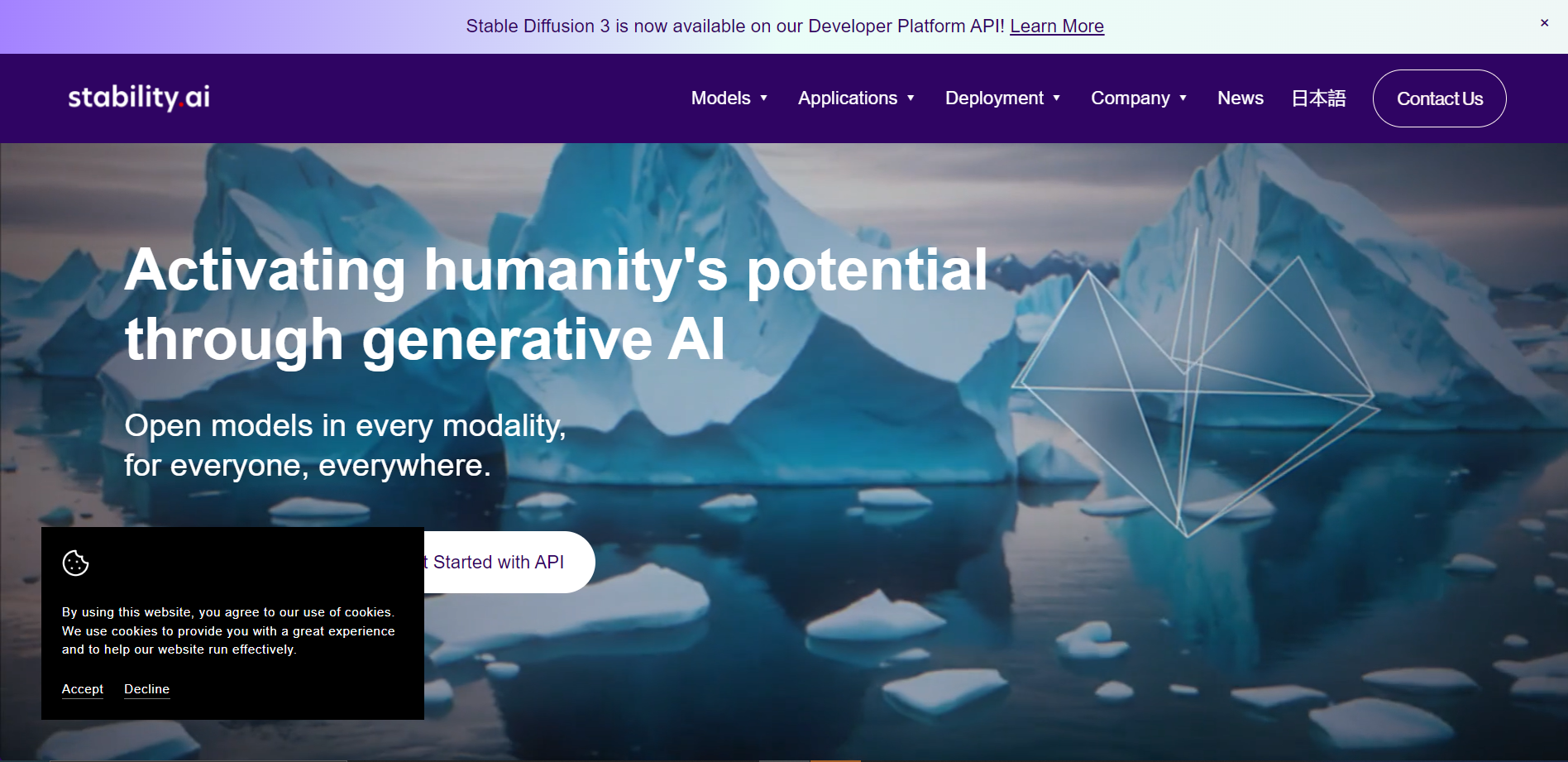Overview
Stable Diffusion is a cutting-edge AI-driven image generation model that leverages deep learning techniques to create high-quality, realistic images. Developed by a team of researchers and engineers, this model utilizes a diffusion process to iteratively refine random noise into coherent and visually appealing images. Stable Diffusion is designed to generate a wide range of images, from photorealistic portraits to abstract art, making it a versatile tool for artists, designers, and content creators.
The core of Stable Diffusion's technology lies in its ability to understand and replicate complex patterns and textures found in real-world images. By training on vast datasets of images, the model learns to generate new images that maintain the intricate details and characteristics of the original data. This results in outputs that are not only visually striking but also contextually accurate.
One of the key advantages of Stable Diffusion is its flexibility. Users can input simple text prompts or rough sketches, and the model will generate detailed images that match the given input. This makes it an invaluable resource for creative professionals seeking to streamline their workflow and enhance their projects with unique visuals. Stable Diffusion represents a significant advancement in the field of AI-generated imagery, offering unprecedented levels of detail and realism.
Key features
- Advanced AI models: Utilizes cutting-edge artificial intelligence to generate high-quality, customizable text and images efficiently.
- Scalable solutions: Designed to handle projects of any size, from small tasks to enterprise-level deployments.
- User-friendly interface: Offers an intuitive and accessible platform that simplifies the creation process for all users.
- Flexible API integration: Easily integrates with existing systems using a robust API, facilitating seamless workflow enhancements.
- Real-time processing: Delivers results in real-time, enabling immediate feedback and swift project iterations.
- Comprehensive support: Provides extensive documentation and dedicated support to assist users in maximizing the tool's capabilities.
 Pros
Pros
- Cost-effective operations: Reduces operational costs by automating routine tasks, allowing teams to focus on more strategic activities.
- Continuous updates: Regularly updated to incorporate the latest AI advancements and features, ensuring optimal performance.
- Data security measures: Implements robust security protocols to protect sensitive information and ensure user data privacy.
- Multi-language support: Supports multiple languages, making it accessible for global users to create and interact without barriers.
- Customizable configurations: Offers extensive customization options to tailor functionalities according to specific business needs.
 Cons
Cons
- High computational cost: Running advanced AI models requires significant computational resources, which can be expensive and less accessible for individuals or small teams.
- Limited user control: Users may find it challenging to fine-tune or customize the AI outputs to meet specific needs or preferences due to preset configurations.
- Data privacy concerns: Handling sensitive data on external platforms can raise concerns about data security and user privacy.
- Steep learning curve: New users might find the platform complex and intimidating, requiring time and effort to master its full capabilities.
- Dependency on internet: The tool's reliance on cloud-based operations means that a stable and fast internet connection is necessary for efficient use.
















